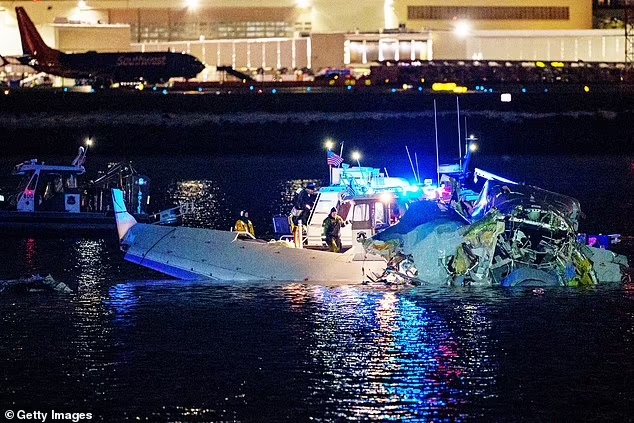The pilot of a U.S. Army Black Hawk helicopter involved in a deadly mid-air collision with an American Airlines passenger jet failed to follow urgent directions to change course seconds before the crash, according to a new investigative report that has shaken the aviation community.
On the night of January 29, Captain Rebecca Lobach was undergoing a routine flight evaluation alongside her co-pilot and instructor, Chief Warrant Officer Andrew Loyd Eaves. What should have been a standard assessment quickly turned tragic due to a series of critical errors.

According to newly released details, Lobach was flying at an unsafe altitude and, in the final seconds before impact, ignored repeated instructions—from both air traffic control and her own co-pilot—to turn left. Both pilots had acknowledged the presence of nearby traffic and opted for “visual separation,” a procedure that allows pilots to maintain safe distances based on sight rather than relying solely on ATC instructions.
Fifteen seconds before the crash, ATC instructed the Black Hawk to turn left to avoid the oncoming jet. Eaves echoed the command in the cockpit, yet Lobach did not act. Investigators still do not know why she failed to respond.
Experts believe the Black Hawk crew may have missed critical words like “circling” during communications due to accidentally pressing the mic button while ATC was speaking—blocking the incoming message.
Additionally, the helicopter’s automatic tracking system (ADS-B), which displays the positions of nearby aircraft, had been disabled for unexplained reasons. The absence of this system likely contributed to the tragic misjudgment.
Captain Lobach, an experienced pilot with around 500 hours of flight time and a former White House military aide, showed no signs of medical distress. Likewise, there were no known pre-existing health issues.
Flight 5342, operated by American Airlines and piloted by 34-year-old Jonathan Campos, was making final preparations to land in low visibility conditions when the helicopter crossed its path. The collision claimed the lives of all 67 people on both aircraft—among them students, parents, hunters, and young figure skaters returning from a championship event.
Aviation authorities have since pointed to missed cues, poor coordination, and delayed intervention as root causes. Experts stress that the tragedy could have been prevented with immediate corrective action.
